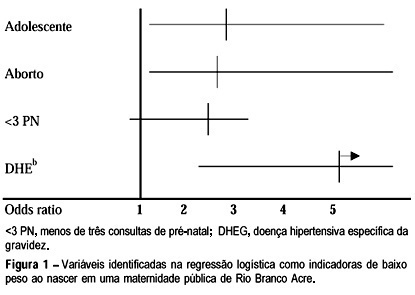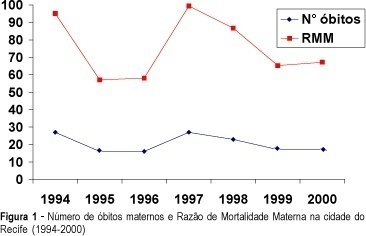Summary
Revista Brasileira de Ginecologia e Obstetrícia. 2002;24(8):547-552
DOI 10.1590/S0100-72032002000800008
Purpose: to evaluate the estrogenic effects of soy phytoestrogens in postmenopausal patients. Method: we selected postmenopausal patients from the Climacteric Service of the Gynecology Department of the Federal University of São Paulo - Escola Paulista de Medicina. The patients were divided into two groups: GI (n=40) received daily 100 mg isoflavone (3 x 33.3 mg/day); and GCtr (n=40) received daily placebo. We included in this study the Kuppermann menopausal index, physical examination and the biochemical determination of total and fractions of cholesterol, triglycerides, estradiol, FSH e LH. We also performed sonographic examination to measure endometrial thickness. To compare baseline and after treatment values of both groups, the nonparametric Kruskal-Wallis test was used for the Kuppermann index, while the t test was performed for other data. Results: evaluation of the Kupperman Menopausal Index, 80% patients of GI showed a decrease in the total score, while the improvement of symptoms in GCtr was 12,5%. The analysis of total cholesterol levels showed that 35 patients of GI had levels above 200 mg/dL, and only 13 of GCtr presented similar levels. The body mass index reduction occurred in GI and the control group showed no changes. We also verified that echo endometrial thickness and FSH levels were similar to baseline values. However the values of estrogen increased after isoflavone treatment. Conclusion: we concluded that 100 mg/day isoflavone may be an alternative treatment for attenuating the climacteric symptoms in 80% of isoflavone users and that it reduced total cholesterol.
Summary
Revista Brasileira de Ginecologia e Obstetrícia. 2002;24(8):513-519
DOI 10.1590/S0100-72032002000800003
Purpose: to study pregnancy in adolescent women as a possible risk factor for low birth weight. Material and Methods: a cross-wide study was performed on 562 adolescent and non-adolescent mothers who were interviewed during the first 24 h after delivery in the period from January 10,2002, to March 25, 2002, in a public maternity hospital located in Rio Branco, Acre State, Brazil. Those who delivered dead fetuses, whose babies died after being born, or had twins were excluded from the study. Results: among the 562 mothers who were studied, 37.0% (n=208) were teenagers (16±1.6 years), and 63.0% (n=354) were 20 or more years old (22.9±6.3 years). The average weight of the newborns was statistically higher (p<0.010) among the adult mothers (3,158.64±626.50 g) than among the adolescent mothers (3,019.93±587.43 g). When the 32 (5.7%) premature newborn babies (<37 week's pregnancy) were excluded, there was also a significantly greater proportion (p<0.007) of newborns with low weight (<2,500 g) among the adolescent mothers (11.9%) than among the non-adolescent ones (5.5%). The analysis of logistic regression showed an increased risk for newborns with low weight among the adolescent mothers (OR=2.99; 1.47-6.07), as well as for abortion (OR=2.78; 1.23-6.30) and pregnancy - induced hypertensive disorders (OR=5.16; 1.65-16.12). Conclusions: the present study shows that associated with the psychosocial, familial, and economic impact, already reported in the literature, pregnancy in adolescents is associated with deleterious effects on the conceptus, which requires a cohort study to assess the repercussions at both the medium- and long-term.

Summary
Revista Brasileira de Ginecologia e Obstetrícia. 2002;24(8):505-510
DOI 10.1590/S0100-72032002000800002
Purpose: to evaluate if multiple courses of antenatal corticosteroids are more effective than single ones to reduce morbidity and mortality of preterm infants. Methods: retrospective study of 184 newborns with gestational age less than 34 weeks from a tertiary-level hospital in São Paulo from January 1988 to December 1998. The patients were divided into two groups: single course (n=135) - newborns whose mothers were exposed to a complete single course (2 doses of betamethasone or 4 doses of dexamethasone between 24 h and 7 days prior to delivery); multiple courses (n=49) - newborns whose mothers were exposed to two or more complete courses. The primary clinical outcomes for the two groups were: frequency of respiratory distress syndrome (RDS), intra-hospital mortality and combined neonatal morbidity (including the presence of the following: RDS, peri-intraventricular hemorrhage, bronchopulmonary dysplasia, necrotizing enterocolitis, sepsis or intra-hospital death). Numerical data were compared by Student's t test or Mann-Whitney test and categorical data by chi² or Fisher exact test, with the odds ratio and its confidence interval. Results: there were no differences between the groups that received single or multiple courses of antenatal corticosteroids in regard to the occurrence of RDS (single course: 22% and multiple course: 18%), intra-hospital mortality (single course 18% and multiple 12%) and combined neonatal morbidity (single course 62% and multiple 63%). Conclusions: multiple courses of antenatal corticosteroids did not reduce the morbidity and mortality of preterm infants. This study emphasizes the present guidelines that recommend the use of one single course of corticosteroid for fetal maturation in pregnant women at risk for preterm delivery.
Summary
Revista Brasileira de Ginecologia e Obstetrícia. 2002;24(7):471-477
DOI 10.1590/S0100-72032002000700007
Purpose: to assess the diagnostic and therapeutic aspects and the complications of symptomatic urinary tract infections (UTI) during pregnancy of patients who were hospitalized. Methods: a total of 136 pregnant women with a clinical diagnosis of pyelonephritis were studied. The studied parameters were: age and parity of patients, gestational age of diagnosis, epidemiologic aspects, laboratory evaluation for UTI, treatment and clinic evolution, prophylaxis and complications. Results: pyelonephritis was diagnosed at the same proportions at all gestational ages. The incidence of UTI was higher among primigravidae. Only 29.3% of the pregnant women had a previous history of UTI; 57.0% were anemic and 93.0% had altered urinalysis. Escherichia coli was the most prevalent uropathogen (75.8% of cases), with low percentages of sensitivity to ampicillin (60.6%) and high percentages of sensitivity to cefuroxime (95,5%). The highest rate of clinical improvement was obtained for the pregnant women treated with cefuroxime (95.7%). Prophylaxis was needed in 11.0% of the patients. Preterm labor occurred in 33.3% of the pregnant women who delivered in our service and preterm delivery occurred in 18.9%. Conclusions: the present results support the need for an early diagnosis and effective treatment of UTI in pregnant women in order to prevent the frequent occurrence of perinatal complications such as premature labor and delivery. We emphasize the need of a periodical evaluation of the pattern of sensitivity of the etiologic agents to the antimicrobials allowed for use during pregnancy, with cefuroxime being adopted as the antibiotic of choice for the treatment of UTI during pregnancy.
Summary
Revista Brasileira de Ginecologia e Obstetrícia. 2002;24(7):463-468
DOI 10.1590/S0100-72032002000700006
Purpose: to evaluate, in the first and second trimesters of pregnancy, the correlation between cervical length and spontaneous preterm delivery. Methods: cervical length was evaluated in 641 pregnant women between 11-16 weeks' and 23-24 weeks' gestation. Cervical assessment was performed by a transvaginal scan with the patient with empty bladder in a gynecological position. Cervical length was measured from the internal to the external os. The gestational age at delivery was correlated with the length of the cervix. To compare the means in groups of pregnant women who had a term or preterm delivery, we used Student's t test. Sensitivity, specificity, false-positive and false-negative rates, and accuracy were calculated for cervical length of 20 mm or less, 25 mm or less and 30 mm or less in the prediction of preterm delivery. Results: the measurement of cervical length, between 11 and 16 weeks of pregnancy, did not show any statistically significant difference on comparing women who had preterm and term delivery (40.6 mm and 42.7 mm, respectively, p=0.2459). However, the difference between the two groups at 23 to 24 weeks was significant (37.3 mm in the group who delivered prematurely and 26.7 mm in the term group, p=0.0001, Student's t test). Conclusion: there was no significant difference in cervical length, at 11 to 16 weeks, between pregnant women who had a preterm and term delivery. However, at 23 to 24 weeks, cervical length was significantly different between the two groups, and this measurement might be used as a predictor for prematurity.

Summary
Revista Brasileira de Ginecologia e Obstetrícia. 2002;24(7):455-462
DOI 10.1590/S0100-72032002000700005
Purpose: to determine the Maternal Mortality Ratio (MMR) among women living in the city of Recife, Brazil through the analysis of all death certificates of women aged 10-49 years from 1994 to 2000. To determine the underreporting rate and to study the main characteristics, basic causes, classification and avoidance of maternal deaths. Methods: a descriptive population-based study was conducted and all death certificates of women aged 10-49 years were analyzed and classified as declared or presumed (Laurenti criteria). Clinical records and autopsy data, when available, were studied and basic cause and underreporting rate were determined. Maternal Mortality Ratio was calculated using information on live births from SINASC ("Sistema de Informações dos Nascidos Vivos"). Results: a total of 144 maternal deaths were identified (declared=104; presumed and confirmed after investigation=44). The Maternal Mortality Ratio was 75.5 per 100,000 live births. The underreporting rate was 27.8%. A predominance of direct causes was observed (about 69%) and the most frequent causes of death were hypertension (19%), hemorrhage (16%) and infection (11%). About 82% of the deaths were considered avoidable by adequate antenatal, delivery and post-partum care. Conclusions: Maternal Mortality Ratio is high in the city of Recife, Brazil and the underreporting rate is still high. Direct obstetric causes and avoidable deaths are predominant. There is a lack of adequate antenatal, delivery and post-partum care.

Summary
Revista Brasileira de Ginecologia e Obstetrícia. 2002;24(7):447-452
DOI 10.1590/S0100-72032002000700004
Purpose: to compare the size of locally advanced breast tumors through clinical examination, mammography, and ultrasound, and describe the parameters of color Doppler ultrasound evaluated before and after primary chemotherapy. Methods: it was a prospective and descriptive clinical study. Eighteen women with the diagnosis of breast carcinoma, with clinical primary tumors of 50 mm or larger, were submitted to palpation, mammography, ultrasound and color Doppler ultrasound at the moment of diagnosis and after 3 cycles of chemotherapy. The response was considered present when there was a clinical decrease of 50% or more and an ultrasonographic decrease of 25% or more, and absent when there was a clinical decrease less than 50% and ultrasonographic decrease less than 25%. A descriptive statistical analysis and Wilcoxon test were used. Results: regarding the size of the tumors, the method whose results were closer to pathological examination was the clinical examination after chemotherapy, when compared with sizes on ultrasound and mammography. The mammography helped to evaluate 44% of the cases before chemotherapy (8/18). In the cases where the response was absent, the Doppler showed a significant increase of the flow and a decrease of resistance and pulsatility index. In the cases where the response was present (9 cases), the Doppler did not show any significant change regarding the studied parameters. Conclusion: clinical examination was the most efficient method to evaluate the decrease of the volume of tumors submitted to neoadjuvant chemotherapy when compared with ultrasound and mammographic examinations. Doppler showed increase of the flow in the cases of absent response.